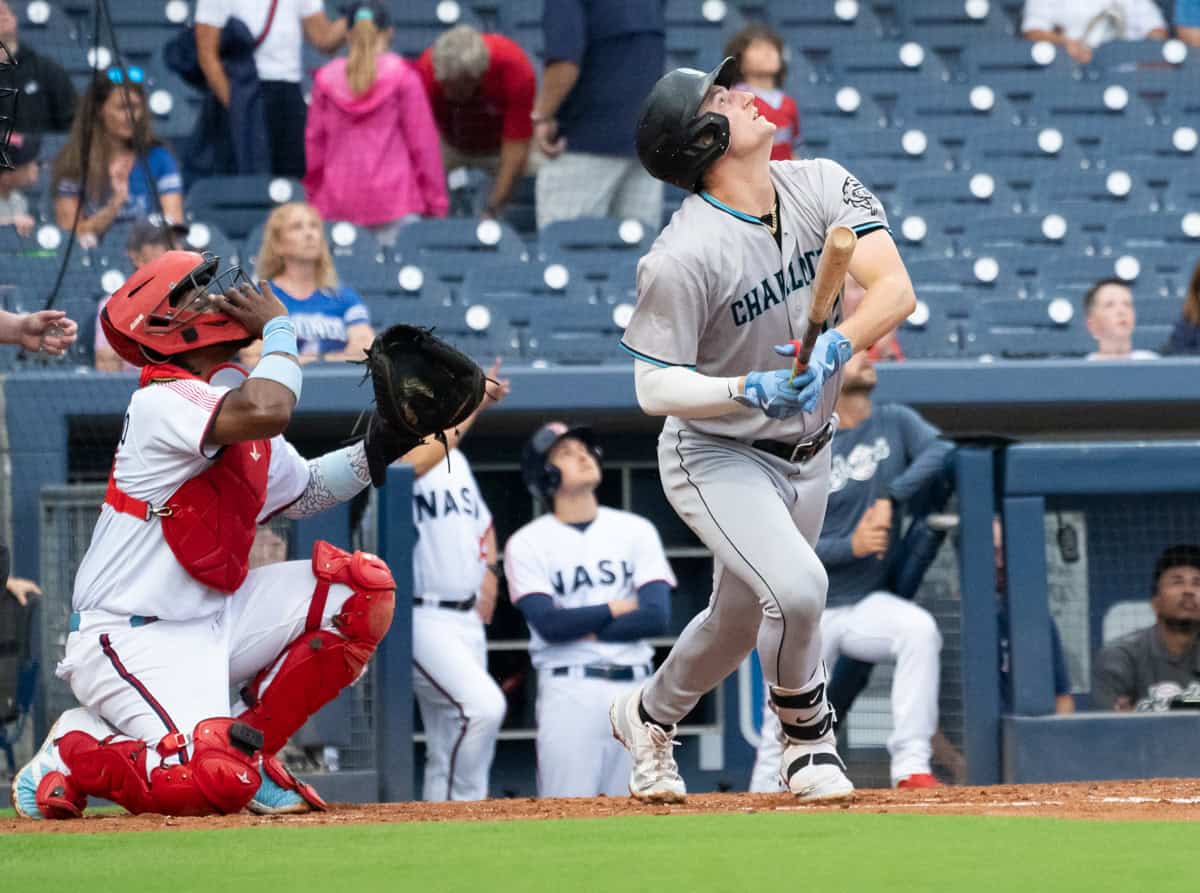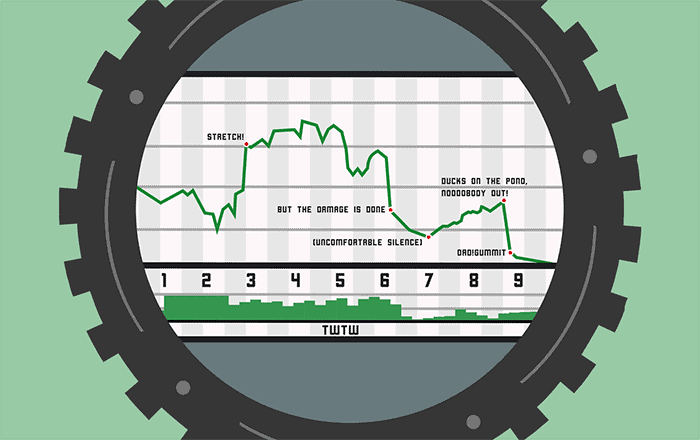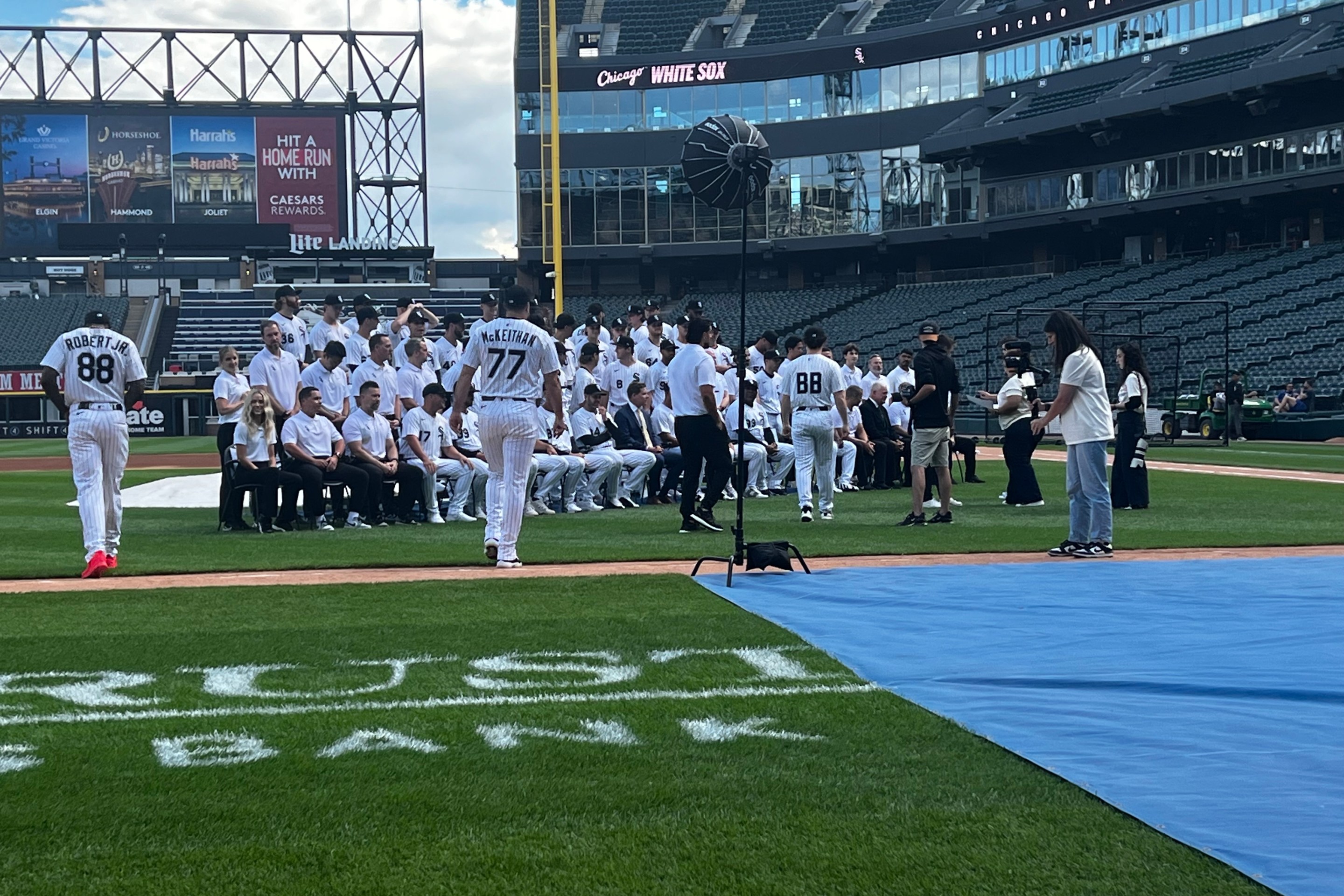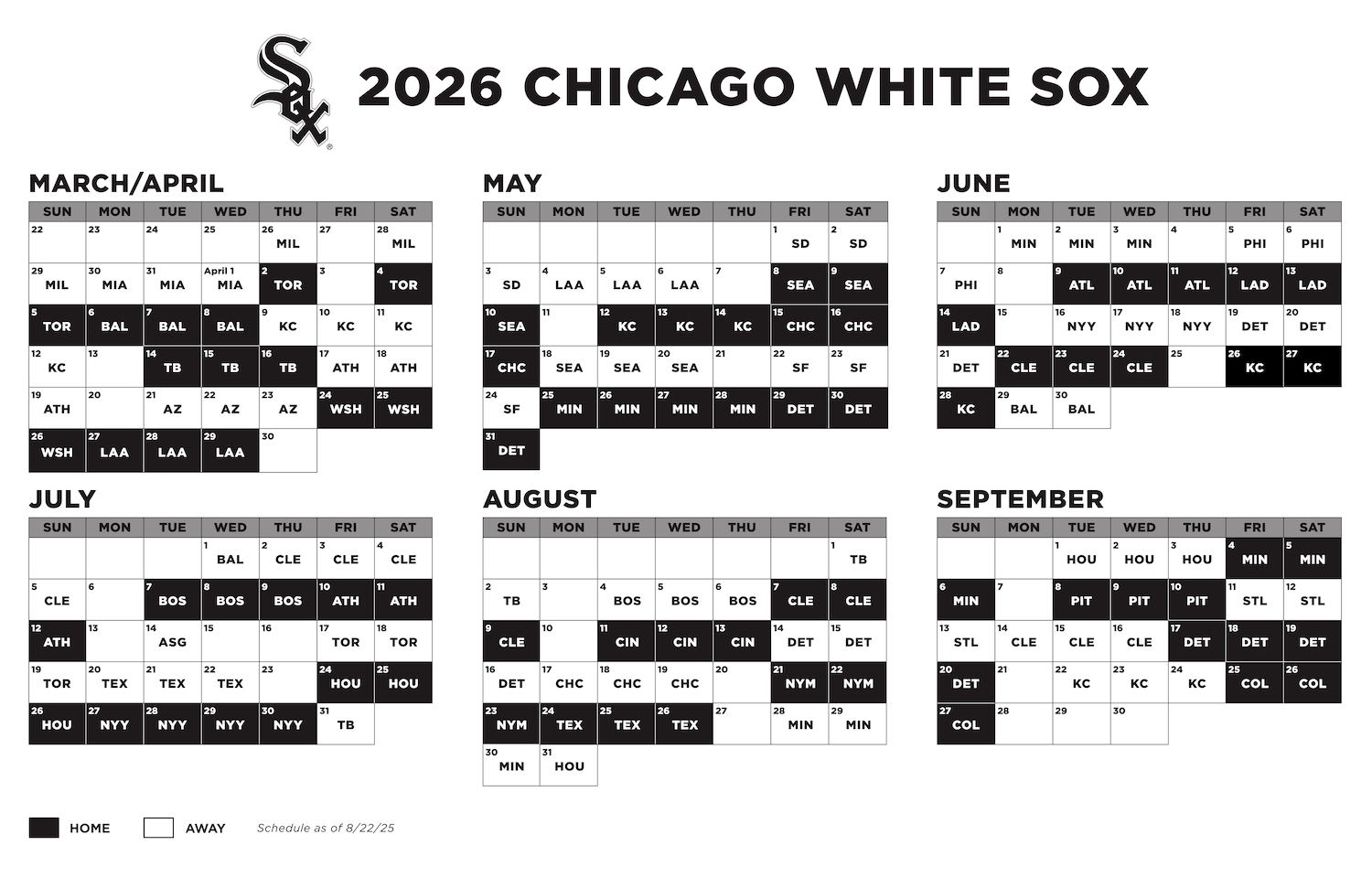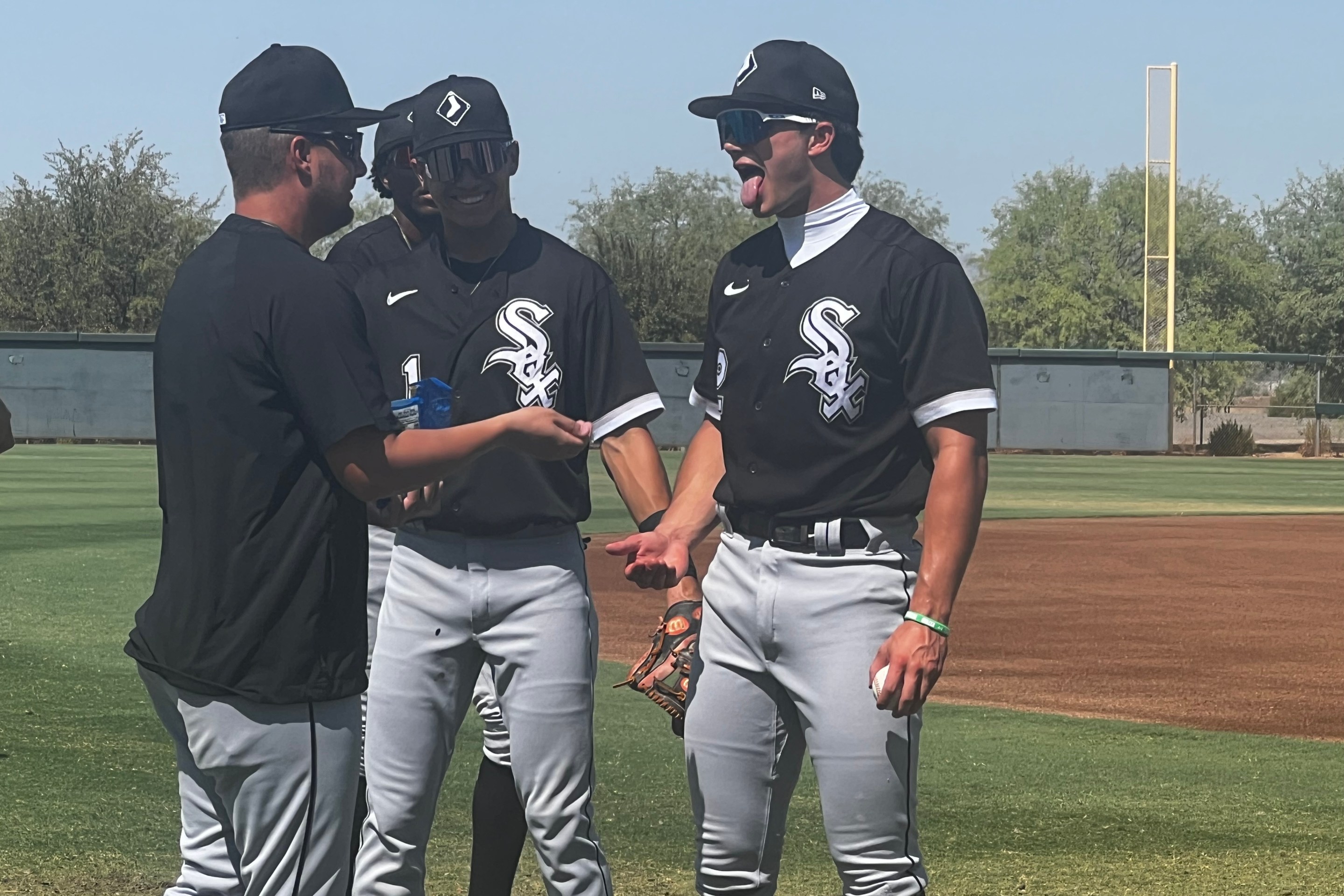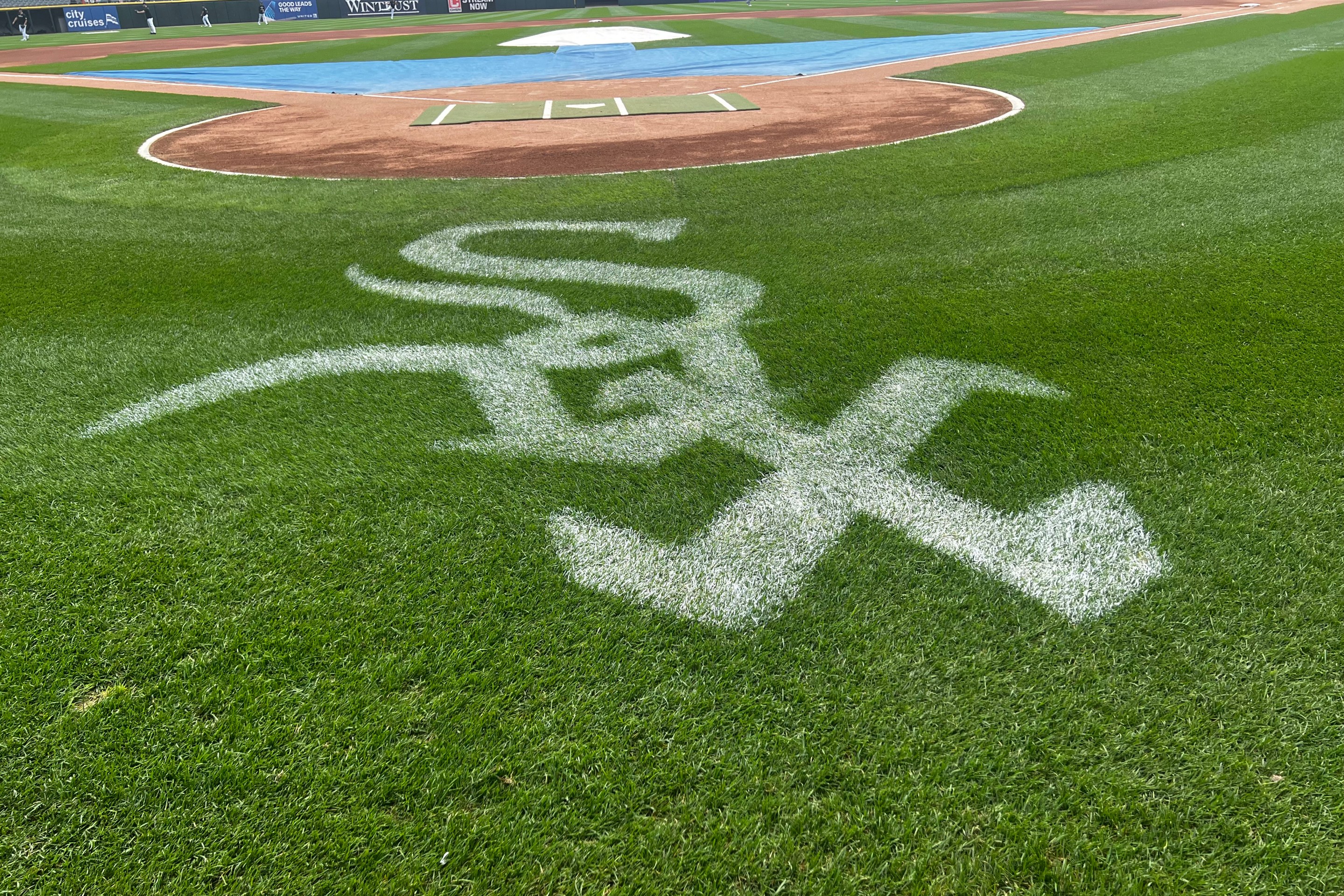Back in early May, James Fegan talked to Colson Montgomery and others about the slow start to his season in Charlotte, and nobody sounded worried. Montgomery chalked it up to the particular wrinkles of Triple-A -- pitchers who trust their breaking balls a lot more and throw them in unintuitive counts, and the automated ball-strike system that turned good takes against him.
Sure enough, Montgomery's production perked up over the remainder of the month. He hit .242/.340/.429 for May, and while he he left some room for improvement, particularly with regards to his strikeout rate, most players don't solve all their issues in one fell swoop. Two, even three swoops would be fine.
Through four months, however, May still represents the high-water mark of Montgomery's season. He hit .183/.321/.344 over June and July, which comprises 38 games and 159 plate appearances. He has just three multi-hit games over this stretch, and his strikeout rate is on the wrong side of 30 percent.
The evaluation industry is starting to react to Montgomery's downturn, at least a little bit. He's no longer the White Sox's top prospect according to Baseball America. Its midseason revision put Noah Schultz ahead of him, while dropping Montgomery's top-100 status from No. 15 to No. 34. More drastically, Montgomery wasn't included in Keith Law's Top 60 prospects, saying that he hasn't been the same player since the back injury on either side of the ball.
But Montgomery still represented the White Sox in the Futures Game, and the team's rhetoric around his struggles remains the same, so when the Knights were here in Nashville last week, my first priority was to sit back and watch Montgomery, doing my best to set aside my priors and simply see what I saw over six games.
Alas, it only turned out to be four. Montgomery sat on Wednesday, and Sunday's game was rained out. A larger sample would've been appreciated, but I still managed to see enough of what his numbers have reflected to date.
Let's start with the shortstop play, simply because it's easier to cover it by saying he wasn't really tested. He made one leaping grab that his 6-foot-5-inch frame and basketball background made easier, and there was one ranging effort to his left where he made a diving stop but fumbled the exchange. It would've been a fine play by any shortstop if completed, so I wouldn't give him a demerit due to the degree of difficulty. The biggest miscue made was failing to go home on a relay throw when he had a legit shot, and hesitating too long to get the runner at second, but having seen Nicky Lopez and Paul DeJong make similar mistakes at short this season at the major-league level, let he who is without sin cast the first stone to the wrong base.
Otherwise, he converted all the routine plays, and while it remains unusual to see somebody his size playing shortstop, I probably wouldn't have noticed him one way or the other if I weren't well aware of the battle to stick at the position.
That leaves the hitting, and depending on your level of skepticism, this section could be similarly concise. Montgomery went 1-for-15 with a double, two walks, a HBP and five strikeouts in Nashville. Take that line, compare it to what he's done the rest of the year, and you could probably draw your own conclusions.
But it's an off day, so let's stretch it out. On the plus side, the double was resounding -- a sixth-pitch cutter laced 103.2 mph into the right-field corner. He also hit a 399-foot flyout to the wrong part of First Horizon Park, which showed all week why it's one of the International League's most difficult environments for home runs (the Sounds and Knights combined for one homer over four games, which Zach DeLoach hit).
Montgomery's patience at the plate remains undaunted. He saw more than four pitches per plate appearance, and similar to what he said in May, twice he had borderline calls go against him on review. Manager Justin Jirschele has praised him for staying within his game, and that's what Montgomery seems to be doing.
The question is whether there's enough room within his game to succeed at the highest levels.
Expansion seems to be necessary. One thing I did not see from Montgomery was square contact on a quality offering. His two elevated drives were on middle-middle pitches. The cutter was a hanger, and the near-homer was on a first-pitch fastball Montgomery appeared to be targeting. Even the other batted ball that qualified as "hard-hit" -- a 96-mph groundout to first -- came on a changeup that split the plate thigh-high.
I'd hoped to see Montgomery's barrel beat a pitch to the spot, the way that Brooks Baldwin had over his first two months with Birmingham, or the way Lenyn Sosa does whenever he's optioned to Charlotte. And while my not-a-scout eye was limited to a sample of four games, it jibes with both Eric Longenhagen's preseason assessment of Montgomery's hit tool ...
Skepticism that his hit tool is as good as his 2023 data performance comes in part from Colson feasting on low-level pitching for a large portion of his 2023 output. His swing is also long and cuts through the bottom portion of the zone. On tape and in the Arizona Fall League, Montgomery struggled with belt-high fastballs and with barrel accuracy in general.
... as well as his Statcast charts. Here's Montgomery's heat map for pitches that he's hit with an exit velocity with 95 mph of higher this season:
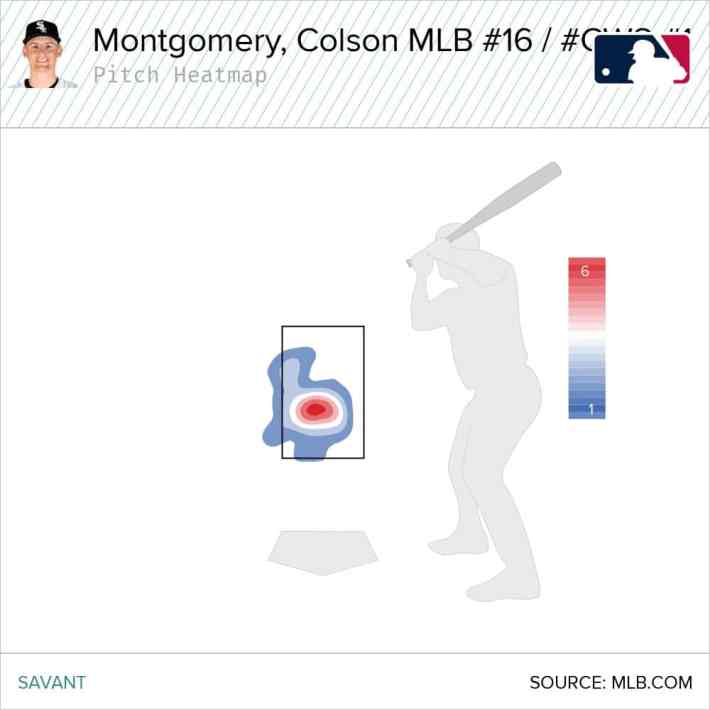
And while you'd expect the middle of the zone to be the reddest part for any hitter, the lack of a spread stands out. For comparison, here's the chart for DeLoach, another credible Triple-A left-handed bat.
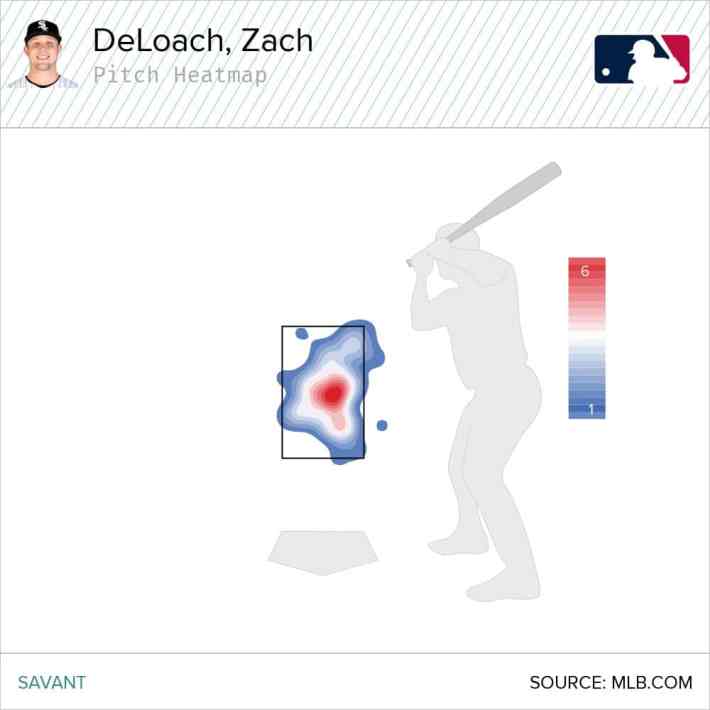
It seems like Montgomery has one swing right now, and it's one that doesn't produce much useful contact to the opposite field or cover the top of the zone. He's mitigating the limitations by avoiding swinging at pitchers' pitches until he has to, which is why his ground-ball rate remains a respectable 40 percent for a struggling hitter. Still, when you step back and picture a guy who gets by on hoping to extend at-bats long enough to see a mistake, you tend to think of an older player who's using his savvy to compensate for a loss of bat speed. Montgomery is only 22.
Time is and isn't on Montgomery's side. Opening the season at Triple-A was kind of an aggressive assignment given the way his oblique and back issues limited reps in 2023, and perhaps any tweaks he needs to make are difficult to deploy in-season. His ascent up until this point was smooth enough to buy him a year. He's allowed to use it.
Montgomery just picked a poor moment for his first protracted issues, because when you combine his down year with the similarly unimpressive showings of Jacob Gonzalez and Bryan Ramos, the next wave of position-player talent appears to be Edgar Quero and the Ripples.
Poor planning on the White Sox's part doesn't constitute an emergency for Montgomery's individual development, so in his present form, I wouldn't put him on any sort of MLB timetable for this year, even if there are some incentives for getting a top prospect involved earlier. Baldwin's better plate coverage and all-fields approach is collapsing against the top pitching in the world, and while he's far more aggressive than Montgomery, the sequencing abilities of MLB pitchers would probably be able to turn Montgomery's patience against him in short order.
What I don't want to see is what this NBC Sports Chicago headline suggested a couple weeks ago:

That caused a small panic when it popped up on my phone as a news alert, but it just appears to be stretching the definition of "pending" beyond its intended timeframe. That word should probably only apply within the same season, and Montgomery probably shouldn't be considered until the first half of 2025 at the earliest.
